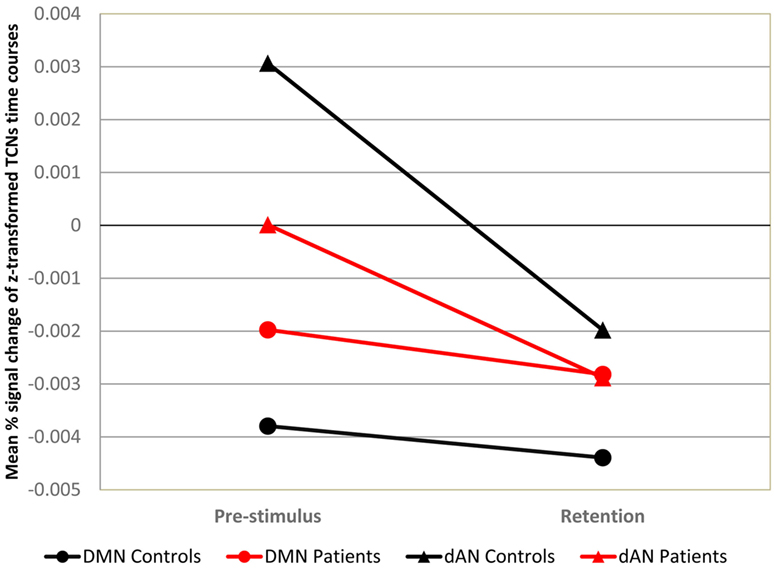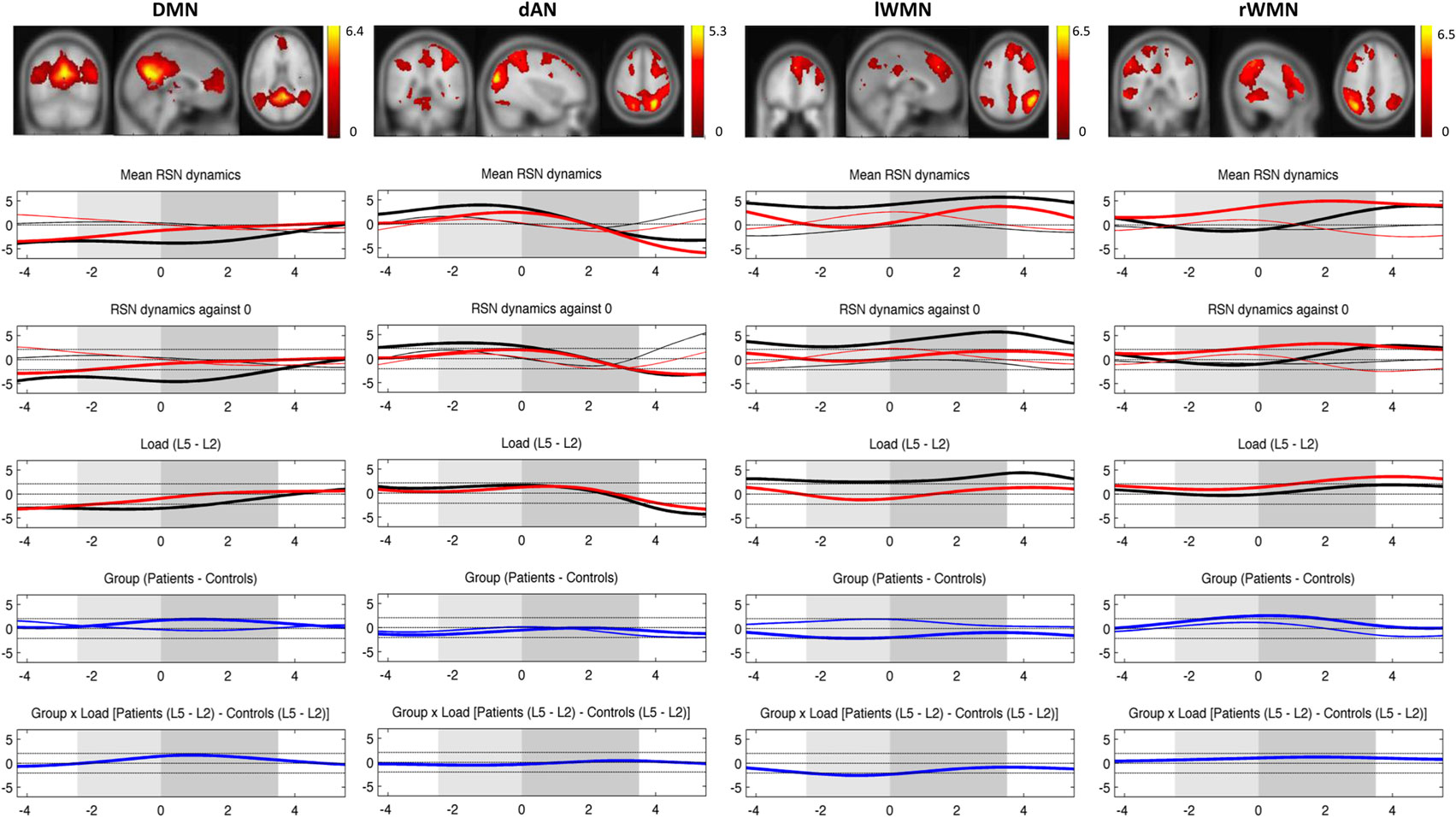
94% of researchers rate our articles as excellent or good
Learn more about the work of our research integrity team to safeguard the quality of each article we publish.
Find out more
CORRECTION article
Front. Psychiatry , 29 August 2016
Sec. Schizophrenia
Volume 7 - 2016 | https://doi.org/10.3389/fpsyt.2016.00141
This article is a correction to:
Inefficient Preparatory fMRI-BOLD Network Activations Predict Working Memory Dysfunctions in Patients with Schizophrenia
 Anja Baenninger1,2*
Anja Baenninger1,2* Laura Diaz Hernandez1,3
Laura Diaz Hernandez1,3 Kathryn Rieger3
Kathryn Rieger3 Judith M. Ford2,4
Judith M. Ford2,4 Mara Kottlow1,3
Mara Kottlow1,3 Thomas Koenig1,3
Thomas Koenig1,3
A corrigendum on
Reason for Corrigendum:
There is a mistake in the labeling of the two networks plotted in Figure 4: the default mode network (DMN) of controls should be indicated with circles instead of triangles such as the dorsal attention network (dAN). The authors apologize for the mistake. The error does not change the content of the article in any way.
In Figure 5, there was mistakenly a red correction line below the label of the right working memory network (rWMN) that was unfortunately not spotted upon publication. This change has no impact neither on the scientific work nor the conclusions of the article in any way. We apologize for the oversight.
The corrected Figures are below:

Figure 4. Mean DMN and dAN from pre- to poststimulus in the WM task. Mean DMN and dAN dynamics at prestimulus and retention intervals for each load and group. X-axis: time points (prestimulus and retention period), Y-axis: mean percent signal change of variance normalized, and z-transformed TCNs.

Figure 5. Mean evolution of TCNs over average trials. Upper plot shows the templates for each TCN from the study of Kottlow et al. with the three orthogonal slices through areas of maximum activation (only positive values; for detailed information about included regions, see Table S1 in Supplementary Material). Lower plots display the mean network evolutions over average trials for each load (thin line = load 2; thick line = load 5) and each group (black line = controls; red line = patients). Dashed lines indicate significance of the t-tests (two-sided, p = 0.05): (1) mean evolutions, (2) mean evolutions against 0, (3) load effect, (4) group effect (blue thin line = load 2; blue thick line = load 5), and (5) interaction of group by load. X-axis: time over trial [prestimulus: −4 to −2.5 s; stimulus (light gray block): −2.5 to 0 s; retention (dark gray block): 0–3.5 s; probe: 3.5–5.5 s], Y-axis: percent signal change of variance normalized, and z-transformed TCNs’ time courses.
The authors declare that the research was conducted in the absence of any commercial or financial relationships that could be construed as a potential conflict of interest.
Keywords: schizophrenia, working memory, temporally coherent networks, state-dependent information processing, simultaneous EEG-fMRI, covariance mapping
Citation: Baenninger A, Diaz Hernandez L, Rieger K, Ford JM, Kottlow M and Koenig T (2016) Corrigendum: Inefficient Preparatory fMRI-BOLD Network Activations Predict Working Memory Dysfunctions in Patients with Schizophrenia. Front. Psychiatry 7:141. doi: 10.3389/fpsyt.2016.00141
Received: 14 July 2016; Accepted: 02 August 2016;
Published: 29 August 2016
Edited and Reviewed by: Thomas W. Weickert, University of New South Wales, Australia
Copyright: © 2016 Baenninger, Diaz Hernandez, Rieger, Ford, Kottlow and Koenig. This is an open-access article distributed under the terms of the Creative Commons Attribution License (CC BY). The use, distribution or reproduction in other forums is permitted, provided the original author(s) or licensor are credited and that the original publication in this journal is cited, in accordance with accepted academic practice. No use, distribution or reproduction is permitted which does not comply with these terms.
*Correspondence: Anja Baenninger, YW5qYS5iYWVubmluZ2VyQHB1ay51bmliZS5jaA==
Disclaimer: All claims expressed in this article are solely those of the authors and do not necessarily represent those of their affiliated organizations, or those of the publisher, the editors and the reviewers. Any product that may be evaluated in this article or claim that may be made by its manufacturer is not guaranteed or endorsed by the publisher.
Research integrity at Frontiers

Learn more about the work of our research integrity team to safeguard the quality of each article we publish.